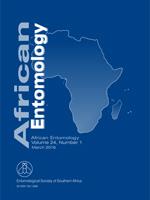The role of juvenile hormone (JH) and corazonin in the maternal regulation of progeny characteristics was examined in the migratory locust, Locusta migratoria (Orthoptera: Acrididae). Crowded female adults are known to produce large eggs, heavier and darker hatchlings than solitarious female adults which produce smaller eggs, smaller hatchlings with brighter cuticular colour. Implantation of corpora allata (CA) taken from gregarious sexually mature females caused crowded females to deposit smaller eggs and smaller, lighter hatchlings. The neuropeptide [His7]-corazonin, present in the central nervous system and corpus cardiacum, is known to induce darkening of body colouration when injected into locusts reared in isolation. To examine whether this neuropeptide is responsible for the maternal regulation of progeny phase characteristics, 1 nmol [His7]-corazonin mixed with 2 µl of sunflower oil were injected twice into solitarious female adults. No effect of corazonin on egg size, the weight of the hatchlings and brightness of their cuticular colour changes was found.
How to translate text using browser tools
1 March 2016
Are Juvenile Hormone and [His7]-Corazonin Related to Maternal Regulation of Progeny Phase Characteristics in the Migratory Locust, Locusta migratoria?
A. Ben Hamouda,
S. Tanaka
ACCESS THE FULL ARTICLE
It is not available for individual sale.
This article is only available to subscribers.
It is not available for individual sale.
It is not available for individual sale.

African Entomology
Vol. 24 • No. 1
March 2016
Vol. 24 • No. 1
March 2016
[His7]-corazonin
juvenile hormone
Locusta migratoria
maternal effect
progeny phase characteristics




